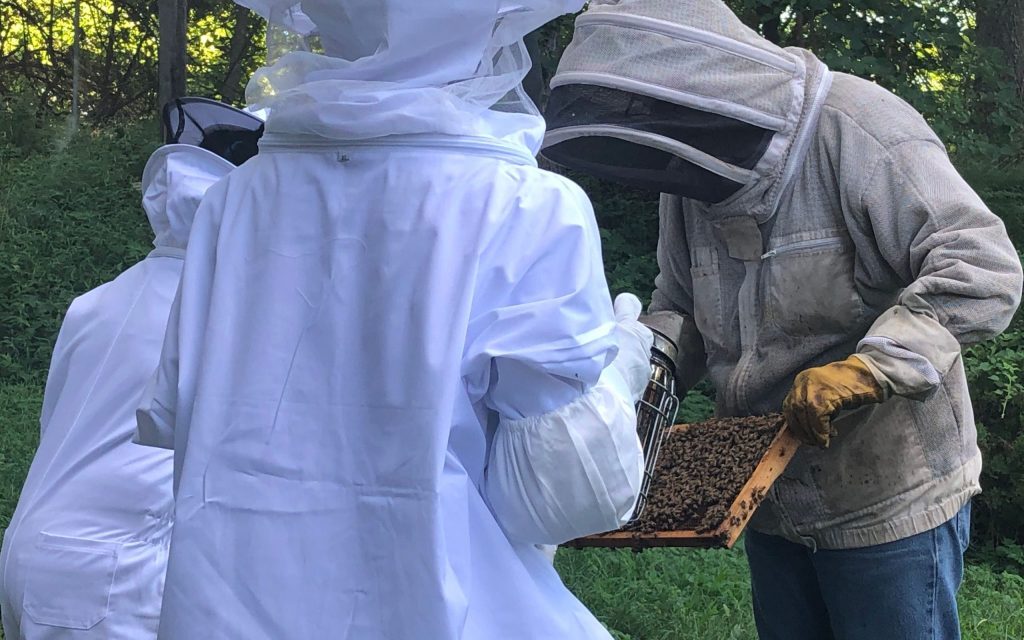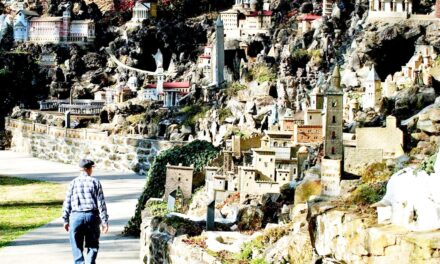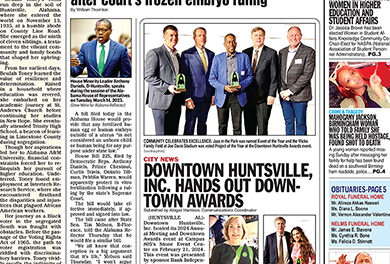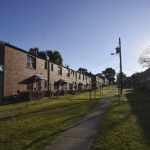By Tierra Stone
AFRO Intern
tierrastone@afro.com
For many years now, in one corner of southwest Baltimore, Stillmeadow Community Fellowship has been taking progressive steps to help their neighborhood adapt to climate change. They have worked towards building a ten-acre forest, installed an urban apiary, and are one of the city’s resilience hubs.
Turning neighborhood churches into resiliency hubs is one of the many initiatives the Baltimore Office of Sustainability has created to help palliate the effects of climate change within the city. The office, founded in 2007, is focused on creating an environmentally safe atmosphere to improve the quality of life by lowering the amount of greenhouse gasses and carbon emissions.

Mayor Brandon Scott has worked closely with the Baltimore Office of Sustainability to reach the goal of making sure the city becomes carbon-neutral by 2045.
“From the start of my administration, I have made it clear that sustainability and improving the lives of all residents is a priority,” Scott wrote in a press release.
Climate change has become more recognized as a global phenomenon with studies showing that droughts, wildfires and extreme rainfalls have been the effect of greenhouse gasses caused by our daily lifestyle. This has prompted urban areas across the country to cope with the ever-changing paradigm shifts in the environment.
Cities in particular are facing big issues such as rising sea levels, drought and scorching heat temperatures. However, certain parts of Baltimore have faced flooding and damage to local infrastructures.
The Baltimore Social Environmental Collaborative has worked extensively with the Office of Sustainability since September 2022 to codesign climate change solutions and to improve the wellbeing of residents.
Dr. Benjamin Zaitchik, professor of Earth and Planetary Sciences at Johns Hopkins University described how these emissions are created and emitted throughout the atmosphere.
“Greenhouse gasses refers to any molecule in the gas form, so anything that we put into the air ends up warming the planet. [Which] includes things like carbon dioxide that gets in when we burn coal or oil or some other sources as well as a bunch of other industrial chemicals; and when they get into the atmosphere, essentially they act like a blanket absorbing some of the heat the earth is trying to radiate toward outer space and that ends up warming the planet,” Zaitchik said.
Zaitchik shared how the harmful effects of these emissions have caused neighborhoods to experience more heat than other parts of the city.
“Baltimore is experiencing that general warming and you end up with some of the neighborhoods that are experiencing heat. The heat affects everyone and then it can be several degrees warmer in some of these neighborhoods. Some of those neighborhoods are the same places where people maybe don’t have air conditioning, but Baltimore is already going to be hotter because it’s a city and we’ve got this vulnerability,” said Zaitchik.
According to the Lawrence Berkeley National Laboratory, many urban areas within the United States have experienced heat waves because of the heat island effect which has caused health-related concerns among civilians.

“Roofs and pavements can constitute to about 60 percent of the surface area of a U.S. city. These surfaces are typically dark in color and thus absorb at least 80 percent of sunlight, causing them to get warmer than lighter-colored surfaces. These warm roofs and pavements then emit heat and make the outside warmer.”
Zaitchik elaborated on his work with several community members and noted that the temperature was higher at night throughout the city.
“Baltimore is a pretty substantial urban heat island and over the past few weeks we’ve seen at night, which is the time the urban heat islands tends to be biggest—it was up to seven degrees warmer at some locations in East Baltimore than it was in the suburbs to some of the greener neighborhoods on the north side of town,’ said Zaitchik.
Nonetheless, the Office of Sustainability created the climate action plan to keep track of greenhouse gas emissions and how to deal with the impacts of climate change.
Zaitchik said that although the climate action plan is still quite new he believes the planning can help get the city on the right track.
Baltimore’s Office of Sustainability reported how the urban heat island effects have had an impact on the city but also listed the components to reduce these emissions.
“Several elements are known to reduce the impact of UHI’s: permeable surfaces on roadways, sidewalks, parking lots and alleys, vegetated or green roofs, urban tree canopies, or green spaces on urban lands,” the office wrote.
In addition to the beehive and work to revitalize the urban forest, Stillmeadow volunteers have been working on steps like planting trees in the peace park to help reduce the heat island effect. They have also created walking paths for people to spend time in nature, and help their mental health. They have also installed rain barrels and cisterns to collect rainwater, which they use to water their vegetables and other plants.
Yorell Tuck, director of operations at Stillmeadow Community Projects, discussed the particulars behind Stillmeadow and how a flood damaged the neighborhood in 2018, which prompted them to realize how they contributed to the flooding.
“This area is a flood zone and every decade there’s a major flood,” she said. “Our stream in our peace park goes through a culvert and a tree had fallen [which] blocked it, and so that water had nowhere to go but up and out. Part of us recognizing that incident with the flood helped us to realize that there’s ways in which our property contributed to the flooding for years,” said Tuck.
Tuck admitted they have taken preventative measures to keep floods from happening again.
“If there’s a tree or limb that falls we cut it and we get it out of the way, and then we’ve also installed rain barrels and cisterns to catch our stormwater runoff from our roof which we’ve repurposed to water our gardens,’’ she said.
Tuck also explained what prompted Stillmeadow to create an urban apiary in front of the church.
“Grass is not an attractor to pollinators which as you know we need bees, butterflies, moths, and birds. Our front lawn has a lot of plants that are native to Maryland and they’re there for beauty, and we have a few different plants and flowers that really mesh well with the native pollinators to this area so that we can promote that ecology,” she said.
Nevertheless, Stillmeadow has continued to be a beacon and a force to be reckoned with. Tuck also explained the future goals and how locals have responded to their efforts to reduce the amount of climate change in the surrounding neighborhood.
“Our goals are to be a model,” she said.“We want to continue to expand our workforce development programs, we want to continue our education programs and we also want to get into community solar,” said Tuck.
Even though climate change has proved to be a global phenomenon one must wonder if it is too late for us to erase our carbon footprint and reverse the damage that’s been done.
Zaichik shared different ways we could work together to do something about climate change.
“Driving less, getting around town with public transport, walking, biking, things like that are a big deal. I’m not going to tell people to turn off their air conditioning but maybe find levels of comfort that are comfortable without turning your house into a refrigerator and taking advantage of opportunities for change as we go,” he said.
Tuck agreed and shared how faith has continued to inspire Stillmeadow to take care of their neighborhood.
“I don’t know, I can’t say if we can officially reverse it. I don’t know if that can happen but I do know that with anything it’s important to at least do your piece,” she said. “We believe as a church that God gave us the earth as an amazing gift, and that any gift that he gives us he expects us to manage it well.”
The post Urban oasis: Alleviating climate change in Baltimore appeared first on AFRO American Newspapers.











